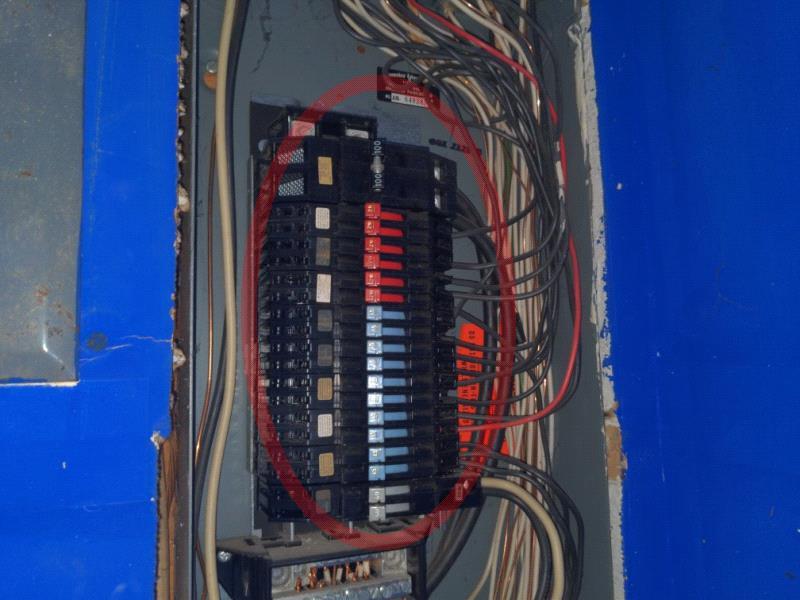As home inspectors in New Jersey, we still come across electrical panel boxes that are made by the Zinsmeyer company. These panels were installed in homes in the 1950’s to the 1970’s. Zinsco electrical panels were both used in residential and commercial applications and their appeal was their lower cost. Electricians have found these panels to be vulnerable to overheating which significantly contributes to the risk of fire in the home. These panels can operate properly for years but can fail quickly leading to fire safety hazards. The overheating problem is exacerbated in the last several decades as more and more electrical use became the norm in homes.
There are a few significant design flaws with these panel boxes. The first is a defect with the plating on the bus bars. A bus bar is a metal strip that electrical current flows through and where the breakers connect. If there is deterioration to the bus bar the connection of the breaker to the bus bar will be inadequate and the result can be arching which can cause a fire. The second major issue is that the Zinsco breakers do not tightly clamp onto the bus bar they are just clipped making for an unstable connection. In fact, the breakers can be moved up and down on the bus bar if you have room in your panel and the panel is not filled. Both of these issues create a significant fire hazard because if the breakers are not positively connected to the bus bars electrical arcing can take place and a fire can result due to increased heat and resistance.
If There is excessive heat buildup caused by arching between the bus bars and the breakers, they may fail to trip during an overcurrent condition. Breakers that fail to trip and protect their wires can overheat possibly causing a fire. The data on these panels and breakers is grim. It was found that 36% of the breakers failed to trip as required under overload conditions. It was also found that 25% of the panels have damage. With this type of negative data all Zinsco panels found in the field should be recommended for replacement.
One of the major issues with these panels is that a person cannot see the damage to the panels or the breakers. When damage is visible its often too late. The damage to these panels is often located behind the breakers to the bus bars that cannot be seen while in front of the panel. Often the breakers will melt to the bus bars which will be out of view. When the breakers melt to the bus bars the breakers will fail to trip and not protect their wires. When damage occur to the breakers, they may appear to be off however they can still allow electrical current to pass through causing fire and electric shock hazards.
The New Jersey home inspector should look for the following to help identify a Zinsco electrical panel.
The first way is to look for the Zinsco label which is usually at the top of the front of the panel box. The word Magnetrip is usually seen in raised stamped letters on the bottom of the panel box. The third way to identify a Zinsco panel is to look for the very colorful breaker handles. The breakers are color coated red, green, blue, gray and white. Zinsco used color coating of its breakers to make it easy to identify the amperage of each breaker. For example, blue breakers are 15 amps, red breakers as 20 amps, and green are 30 amps.
NJ home inspectors should be able to identify Zinsco electrical panels. If a Zinsco panel is identified the home inspector should educate the client about the fire hazards that exist with this type of panel. The NJ home inspector should recomened replacement by a licensed electrical contractor.

